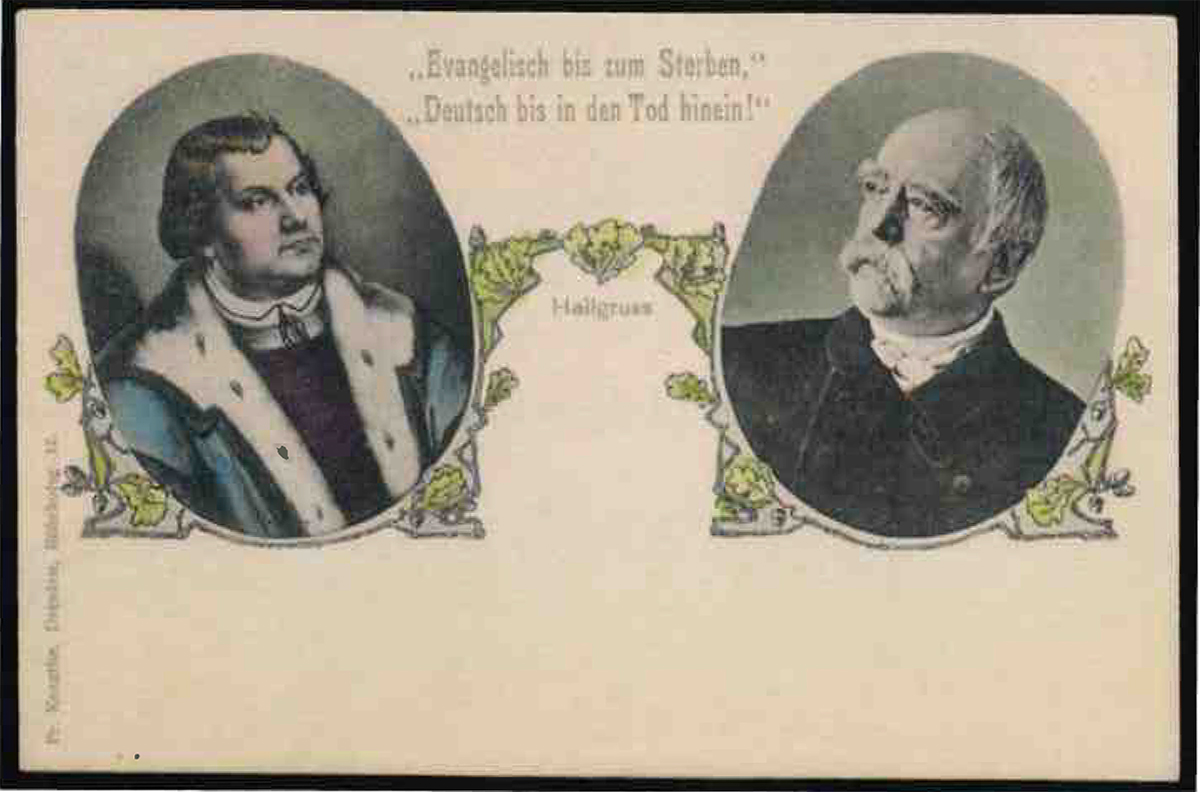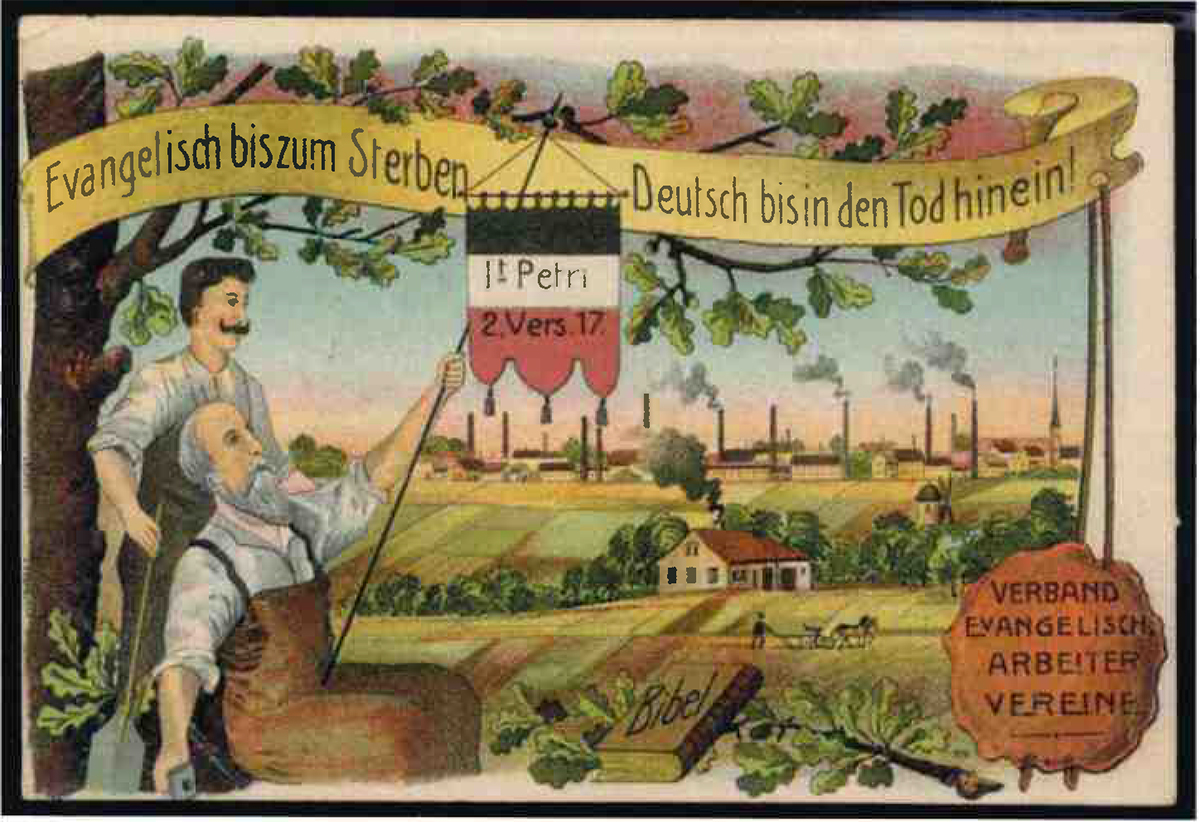Interpreting History as German-Protestant (c. 1880–c. 1903)
Abstract
These two postcards use a constellation of markers to define German history as Protestant and to claim corresponding interpretive authority for the present. The first postcard features oval portraits of Martin Luther (left) and Bismarck (right). Their faces are oriented toward each other in a way that suggests dialogue and mutual regard. Bismarck is presented visually as Luther’s descendent. The slogan at the top—“Evangelisch bis zum Sterben, Deutsch bis in den Tod hinein!” [“Protestant until Death, German even in Death!”]—makes clear the confessional allegiance of the German nation. It also signals that the German nation had replaced religious faith as the giver of meaning to death.
In the second postcard, the same slogan hangs above a landscape scene that features rural workers in the foreground and smokestacks in the background. The seal of the Verband Evangelischer Arbeiter Vereine [Union of Protestant Workers’ Associations] appears in the lower right corner. By making reference to a Bible quote (1 Peter 2:17): “Honour all men. Love the brotherhood. Fear God. Honour the king,” different generations, industrial society, and the rural population are presented as united in faith and nation.
Source
Source: Reproductions in Otto May, Martin Luther. Sein Leben und seine Wirkung im Postkartenbild 1883–1945. Hildesheim: Verlag Franzbecker, 2014. Luther and Bismarck, illustration 200, p. 97; Protestant Workers’ Associations, illustration 202, p. 98.

